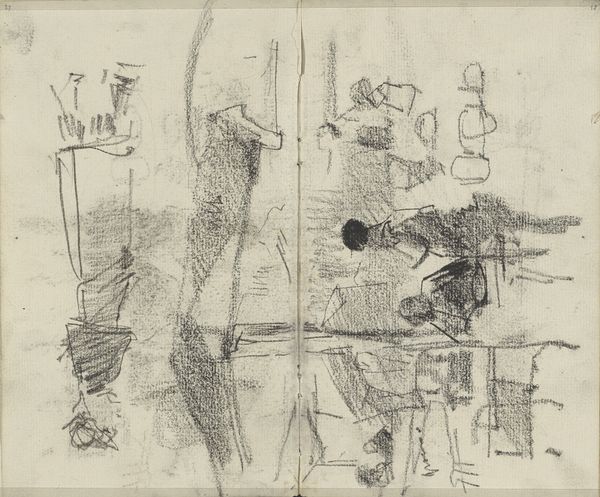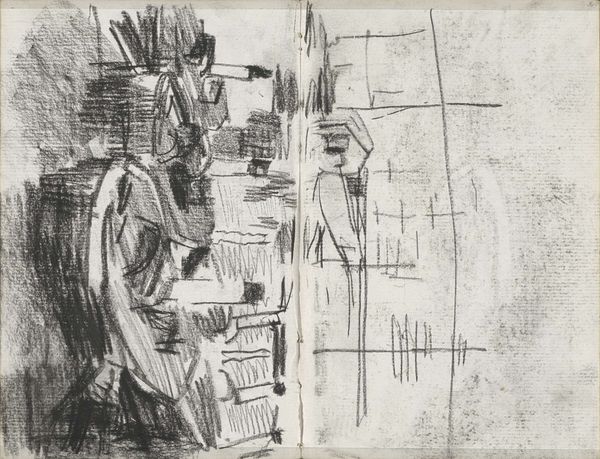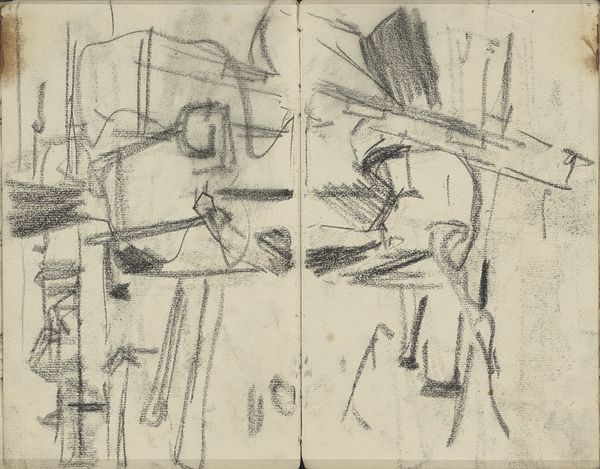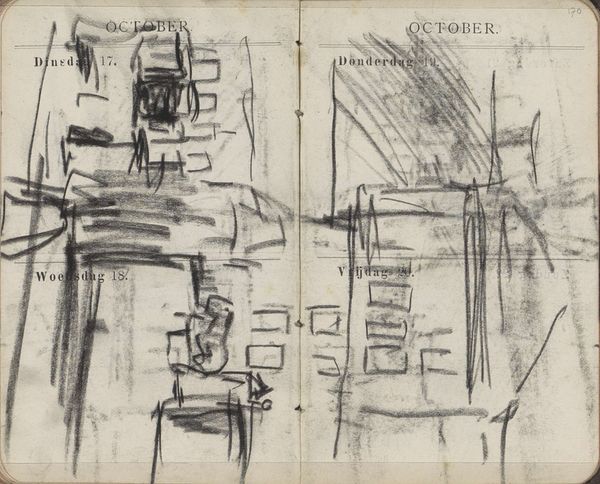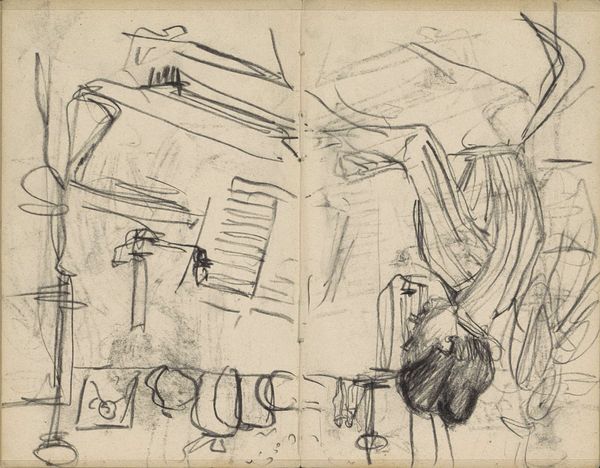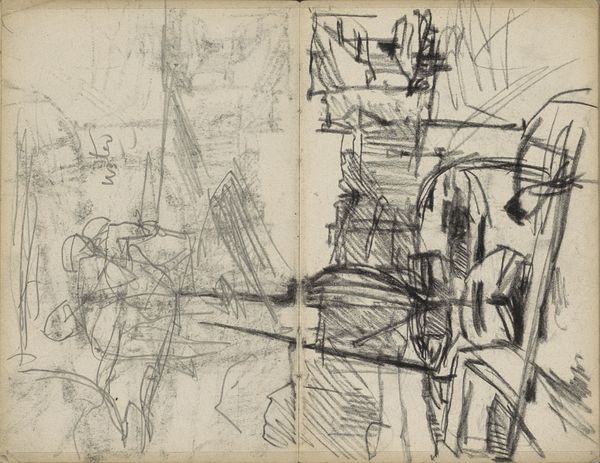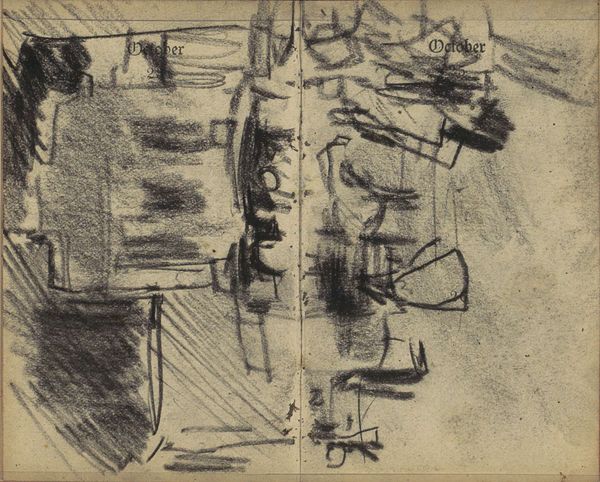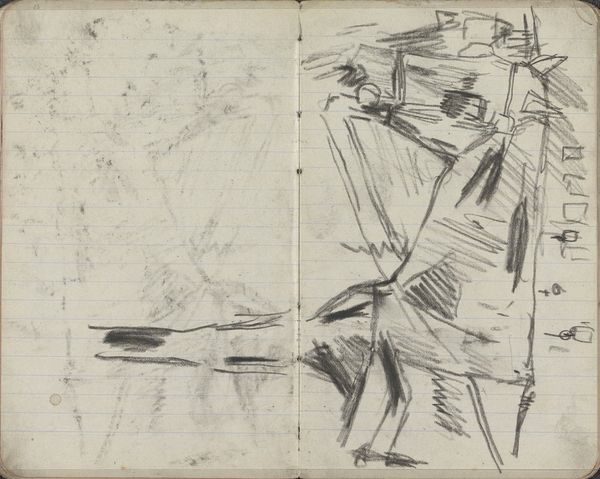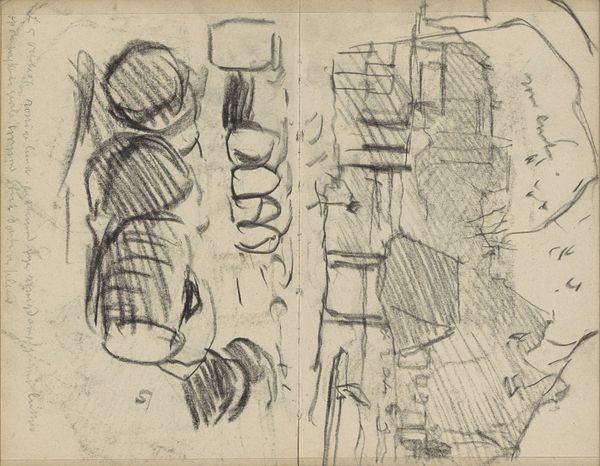
drawing, graphite
#
drawing
#
landscape
#
graphite
#
realism
Copyright: Rijks Museum: Open Domain
Curator: Here we have George Hendrik Breitner’s 1893 graphite drawing, "Gezicht op de Dam te Amsterdam met de Nieuwe Kerk," or "View of the Dam Square in Amsterdam with the New Church." Editor: My initial impression is one of incredible spontaneity, almost like a rapid seismograph of urban energy rendered in charcoal. The sheer density of marks creates a very palpable, if not chaotic, sense of place. Curator: Indeed. This sketch likely originates from Breitner’s smaller sketchbook. Examining such portable works can provide unique insight into an artist’s working methods and his social context. As a realist, Breitner sought to depict everyday life and labor—street scenes, working-class people—democratizing subject matter previously considered unworthy of high art. His process often involved carrying sketchbooks and cameras to document urban life. Editor: Precisely, I see how the interplay of shadow and light guides the eye to certain areas while obscuring others, lending an immediacy to the composition that borders on abstraction. Curator: These quick graphite sketches were as vital to Breitner’s process as his photos. From them, he created prints and paintings with different effects and finishes that were often informed by japonisme. Editor: I also notice the visible page markings – dates labeled “Januari,” “Zondag,” “Maandag,” and “Dinsdag,” – which are integrated within the chaotic visual. The grid these marks make acts as another architectural compositional tool, a sort of structural counterbalance to the overall disorder of the line work. The stark white grid on which the black sketch occurs creates an internal push-and-pull of opposing forces. Curator: By juxtaposing these rough sketches and notations with carefully staged society portraits and formal scenes, Breitner deliberately challenged traditional class divisions within the art world. The commodification and dissemination of artworks as printed matter were central to this democratization of visual representation and broader engagement with realism as a progressive movement. Editor: It is remarkable to observe how such rudimentary materials can evoke a sense of vast urban spaces. Breitner achieves this not just through realistic rendering, but through abstract strokes that give a glimpse of a lived world. Curator: Viewing art through the lens of labor and materiality gives us a richer and broader view, contextualizing his images within Dutch society. Editor: By focusing on elements like the raw, unrefined sketch marks that shape the structure, the formal lens draws attention to what a painting reveals about the artistic process itself, creating an internal space for emotional interpretation.
Comments
No comments
Be the first to comment and join the conversation on the ultimate creative platform.

